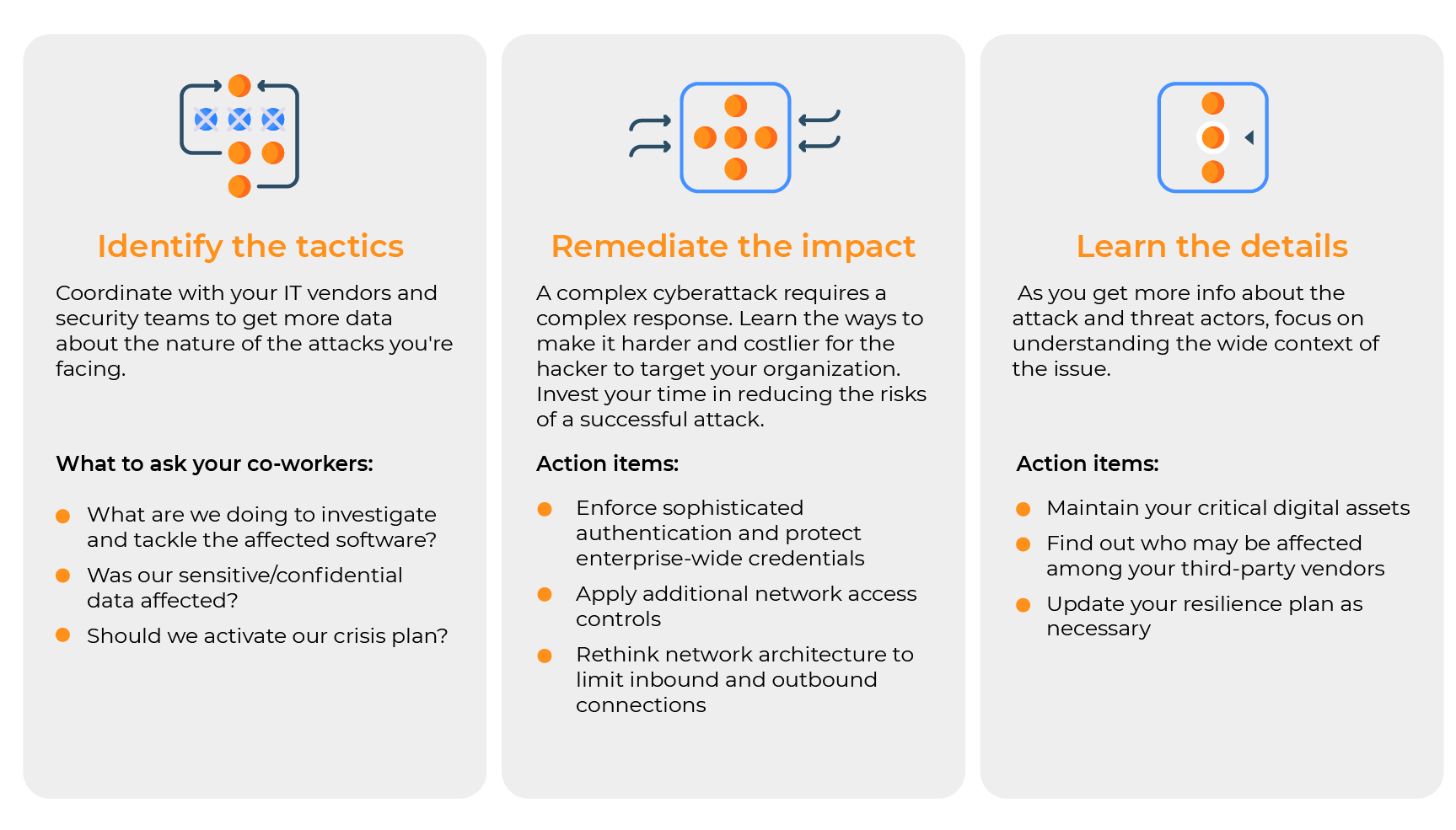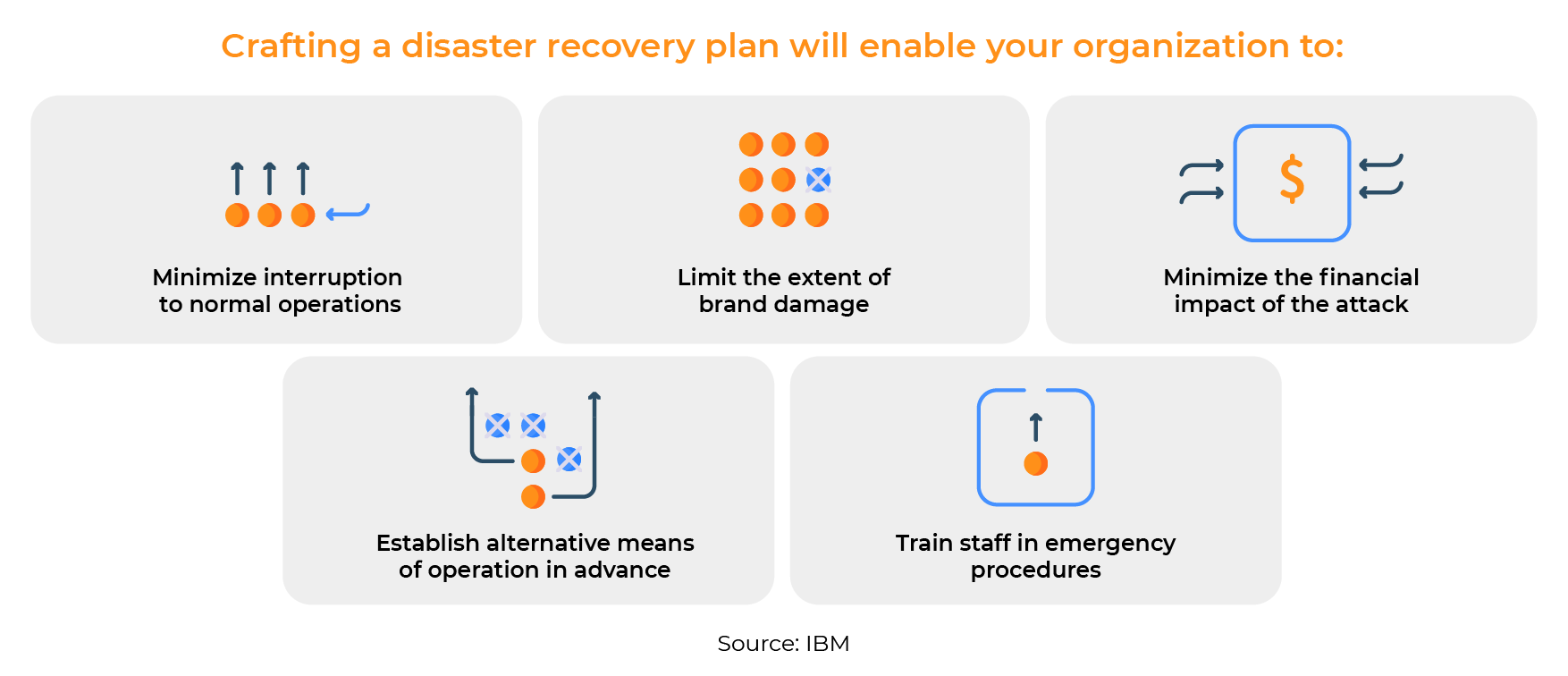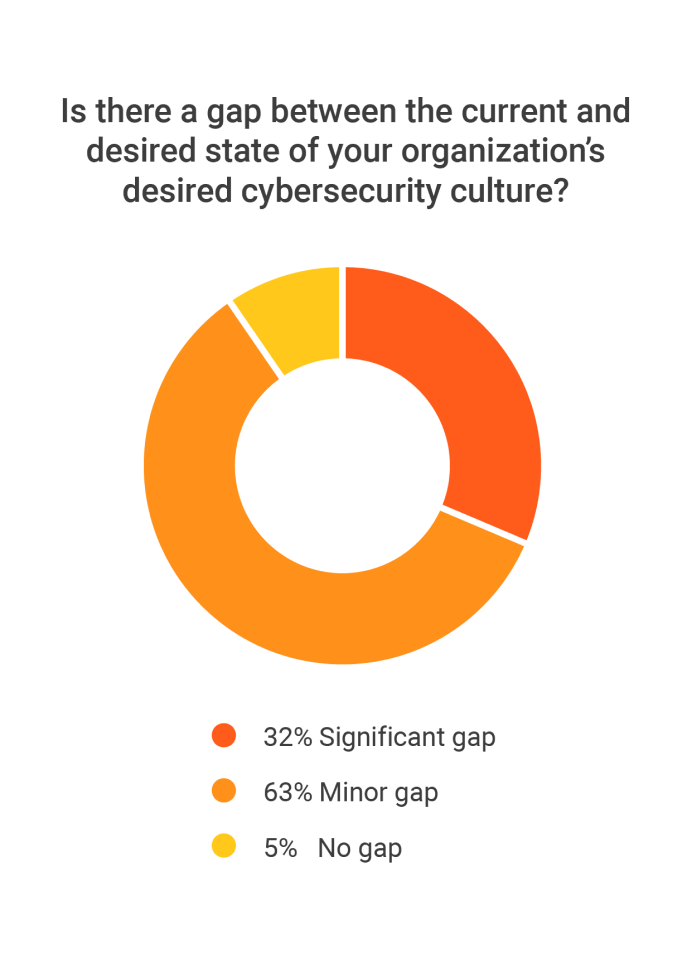
Data security is no longer just about the confidentiality of your information. It encompasses operational resilience, commitment to best-in-class data security practices, and the enablement of ethical principles across the organization. Despite massive investments of time and money, this topic remains a frustrating pursuit for many organizations. The pandemic-induced increase in remote work highlighted many of the potential issues with data privacy and security. Cloud access, ransomware, and data mishandling became threats as teams moved to remote work, and therefore expanded potentially breachable surface area.
Here we’ve outlined some trends that executives and data security specialists might find useful, along with immediate steps to prepare for or tackle them.
But first, let’s start with the basics.
Do You Know Your Enemy?
What is data security?
We define data security as a way of thinking about and dealing with today’s cyber threats. It implies various techniques for protecting information from unauthorized access, including the hardware security on your database servers to the access control and secure architecture of your software. At the top, it is regulated by organizational data policies that often derive from governmental regulations. Proper data security is about securing your information without limiting the ability to capitalize on it and ensure end-user privacy.
Data security relies more on the foreseeing and preventing of potential threats than merely complying with standard security practices. Proper data security requires the application of practices like data encryption and compliance monitoring. The ultimate goal is to defend your organization from cyberattacks – malicious attempts to damage, steal, or destroy sensitive corporate information.
Why is data security important?
Current day hackers are driven by the idea of monetizing information, which means they go far beyond credit card scamming or social media phishing. In 2021, we define a cyberattack as a complex raid led by professionals that innovate faster than their targets.
The volumes of data we operate are constantly growing, driving a need for secure data governance. Your cybersecurity expert should ensure the data privacy of your company, working to protect against cyberattacks as well as the reputational impact of a breach
What is a data breach?
A data breach is an incident that exposes an organization’s sensitive corporate data to the unauthorized public. The breach not only affects enterprise itself, but can also expose additional individuals such as patients or customers.
These days, technologies are being created sometimes faster than we can protect them. One CITL research study finds that many new digital products and tools are going to market with minimal security testing. A breach happens due to weakness in the technology itself or how it’s being utilized.
However, even if your back-end works perfectly, human error due to poor digital habits can compromise the whole resource or network. Without a cultural shift on the one side and data-savvy leadership on the other, you’re almost guaranteed to be at risk.
Preventing a data breach starts with the comprehensive understanding of how these breaches occur. There are various myths about data breaches occurring due to an external hacker attack, however some of the most common causes include:
- A lost or stolen device such as an employee’s unencrypted laptop unlocked smartphone or hard drive.
- Accidental misuse such as an employee borrowing a colleague’s laptop without proper authorization. While the misuse was unintentional, the data should be considered breached.
- Malicious intervention, which occurs when a person purposely shares sensitive data to affect an individual or a company. While such persons might have legitimate authorization for data usage, their intent is malicious.
What can you do when facing a data breach?
While every organization is vulnerable to complex cyberattacks, a company’s board and executive team should be prepared to identify the key disruption points and to solidify immediate response tactics. Here are a few tips to start:

Immediate Steps to Protect Your Data
Ultimately, company leadership is responsible for managing cyber threats and related business risks. It is critical that an organization’s leaders are knowledgeable about data security, and are sufficiently aware of the state of cyber resilience within the organization. To assess the impact of cyber attacks on your business, there are some immediate steps you can take.
Secure sensitive data architecture
While modern data management tools help businesses capitalize on their data and reduce TCO, keeping information safe is still a major challenge. It requires a scalable and streamlined process that starts with the data provisioned. Make things more manageable for your data science team by automating routines and enabling them to assess risk by sharing the big picture of your data landscape.
Additionally, it’s critical to collect protected data with mature defensive practices. Most modern data protection solutions are built with secure options by design. Don’t know what fits best for you? Schedule a complimentary call with one of our specialists for some expert insights.
Finally, it’s necessary to consider data landscape monitoring. Are your deployment models flexible and secure at the same time? Can you monitor your data activity? Are you in control of access to sensitive data? Agentless architecture is easier to deploy, while agent-based architecture won’t compromise your bandwidth because of local data collection. Each architecture has its pros and cons, yet they can still monitor and secure your data sources without burdening your infrastructure teams.
Learn best practices for destroying organizational data
Once information is no longer needed, it should be disposed of properly. Failure to properly destroy organizational data will lead to compliance issues, breaches, and additional expenditures. Some of the core disposal practices include:
- Data overwriting: One of the easiest and cheapest options for general purposes. It can be done by software to clean the entire storage or just a specific set of files. Generally, data overwriting is cost-efficient and a climate-friendly option for small tasks. However, overwriting large data storage isn’t necessarily 100% secure. In addition to ‘blind zones’ (the inaccessible zones of every hard drive), there’s also the chance for unexpected data change. Additionally, note that overwriting only works when a hard drive is writable and operable – overwriting won’t work properly on damaged disks.
- Data erasing: This method, also referred to as degaussing, is done by a degausser – a machine that disrupts and eliminates magnetic fields stored on tapes. This method of destroying data makes sensitive information completely unrecoverable. However, large data storage requires a solid degausser, which is expensive and can lead to complete equipment outage. Once degaussed, there’s no opportunity for service or replacement warranties. Also note that this method leaves room for human error – even an extra minute of electromagnetic activity can lead to a system breakdown.
- Shredding/Crashing/Destroying: One of the most universal ways to get rid of sensitive data is to physically destroy it. Disk melting or shredding makes both storage and data unavailable forever. This method provides the highest assurance of complete data destruction, making it impossible to ever restore. However, it’s also one of the most expensive ways to get rid of critical information, given the high expenditures involved. It can be a good option for short-term data destruction tasks but likely should not be considered as part of a long-term strategy.
Reduce data breach costs
Based on research from the IBM & Ponemon Institute Annual Cost of a Data Breach report, we’ll highlight some of the biggest factors in data breach costs and strategically pinpoint some of the ways to reduce them. In general, we’re seeing average costs for a breach decrease when a company has already invested in advanced cybersecurity services. Given that, we can conclude that the cybersecurity investment cost-efficiency has decreased.
Another important indication from the research is an increasing gap between higher and lower cost breaches. We’re seeing that costs correlate to response time. According to the IBM study, “In 2020, a breach with a lifecycle of fewer than 200 days, on average cost an organization only $3.21 million. But for a lifecycle greater than 200 days, the average cost jumps 30% to $4.33 million.”
Finally, the IBM breach report remarks on the benefits of cloud security. Cloud service providers have a myriad of security benefits ranging from standalone features to complex system solutions. These things speed up the data breach response time and cut the costs for an attack. Are you still considering the right way to move forward with a cloud migration? Get a free consult from our Cloud Engineering experts.
Craft a disaster recovery plan
In a world that expects companies to be continuously functioning, the ability to minimize the impact of disruption and quickly recover is crucial. One Forbes survey finds, “only 42% of global executives are confident that their organization could recover from a major cyber event without it affecting their business”. Formulating a disaster recovery plan is exactly what you need to respond to and recover from the complexities of a breach or cyberattack.
A disaster recovery plan (DRP) is composed of detailed instructions to address disruptive incidents (access lost, power outage, cyberattack, natural disaster). In short, any event that leads to brand damage, lost revenue, or customer dissatisfaction can be treated as a disruption. Your DRP becomes a roadmap for rapid recovery, regardless of the source. A DRP focuses on all types of operational disruption and enables launch instructions for anyone.

While plans will differ according to industry and organizational structure, there is a general sequence that any standard DRP will follow:
- Outline the major goals of your plan. Write a list of key points using the example in the image above.
- Highlight the staff members responsible for data processing in your organization and outline a critical list of applications and assets.
- Document inventory, including manufacturers, serial numbers, and costs.
- Include detailed backup procedures for each IT service, recovery action procedures, and ways to restore the entire IT system
After assessing any damage, the organization should rebuild its processes and create/test a new DRP.
Establish a security-first culture
Cybersecurity solutions can’t guarantee your operational security as long as there is a human component. Employees, including leadership, make individual decisions about what page to visit, what resource to trust, and how much to invest in data security practices. That’s why building a security-first culture and enforcing the right data policies are critical.
It means establishing a framework of habits that lead people to behave in a way that enhances organizational cybersecurity, not threatens it. We like to refer to this as ”cybersecurity consciousness.” Security becomes a matter of mutual benefit not only internally, but also on external projects. No more last-minute guesswork or staying silent while unsure about the safety protocol.
Pro tips:
- Cultural transition doesn’t happen overnight. It requires continuous communication that starts with listening carefully to the biases, assumptions, and concerns of your staff.
- Ask some of the C-suite / company leadership to set cybersecurity as a standing agenda item at board meetings. Show the issues it addresses and how it may affect your business goals.
- Educate your employees on cybersecurity best practices at their workplace.
- Have HR organize company-wide training events and provide insight on employee reactions.
Marketing specialists can provide a strategy and roadmap for promoting cybersecurity culture across the organization – from email campaigns to webinars and PDF-guides.
To Sum It Up
Although you may have a few techies in your IT department, even a single mishandled email can handicap your budget and reputation. No matter where and how your organization operates, there are well-documented strategies to maintain security, even in the face of a potential breach.
Secure-first digital transformation requires operational, technological, and cultural change. Safeguarding this growth and keeping data security at the top of the agenda requires rethinking the technology stack and implementing agile processes. Ultimately, business leaders can (and should) drive change and innovation in cybersecurity just like other aspects of the business.
